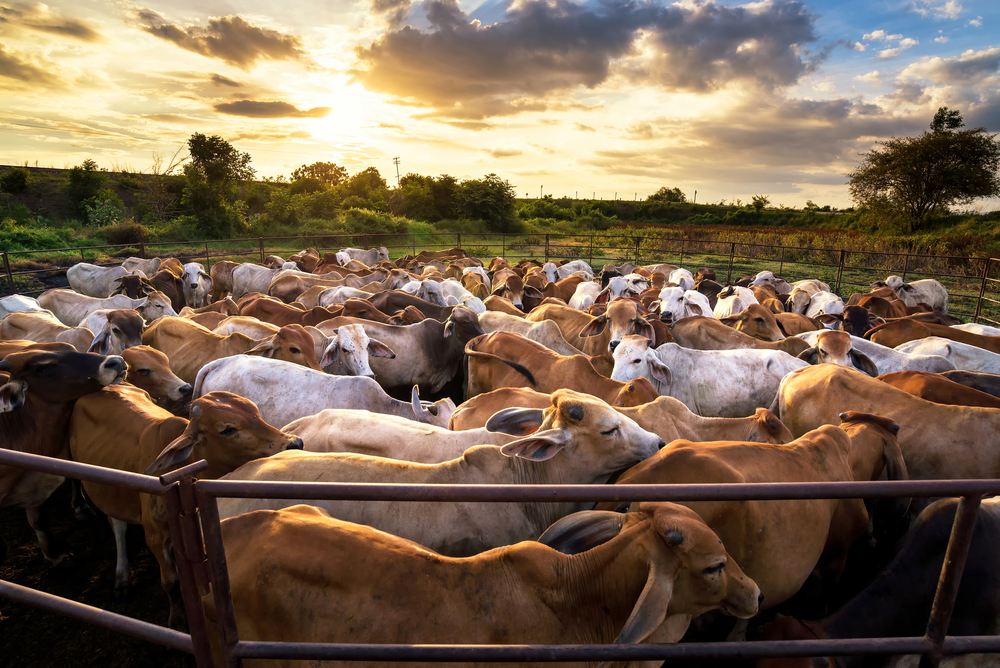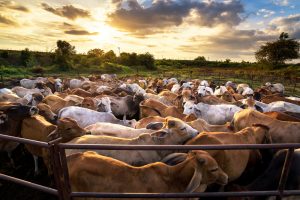

There is nothing like owning and managing a flock of livestock. You’re responsible for a group of large and strong animals that add to the environment and the American food chain. However, like any other animal, owning livestock comes with great responsibility, such as proper feeding and nutrition. The livestock diet mostly centers around various types of hay. Even if your livestock likes to graze on grass, having alfalfa hay from David Woods can benefit you in terms of cost, nutritional density, and more.
As you prepare the hay for your livestock to feed on, you must consider what size square hay bales you should use. The ideal size is based on many factors that we cover below.
Type of Hay
Before creating hay bales, you must decide on the hay type to use. Your livestock may eat legume, alfalfa, or grass in most cases. Alfalfa hay is usually the most nutritious, as it has a higher level of protein, minerals, and vitamins compared to grass. It also has a high energy content, but you should be careful not to overfeed your livestock as it can result in bloating. Therefore, you may want to choose smaller alfalfa hay bales to ensure the animals eat it in the right proportion.
Transport and Storage
When choosing your bale sizes, consider how far and long the journey will take. You also must consider where to store them and how much storage space you have. The amount of ventilation you have between each bale can affect how long it will last. The last thing you want is for mold to set in because you do not want to feed your livestock moldy feed.
Type of Animal
One bale size doesn’t fit all when it comes to feeding various animals on your farm. The type of animal you have on your farm will play a massive role in the size of the bales you purchase. Animals such as horses and cattle eat way more hay daily than your typical animal. A lactating beef cow will also require more hay, not only for the mother but also for the calf that needs to nurse. If you currently mostly have baby livestock on your farms, you may want smaller hay bales to account for the animal’s size, so it could be easy for them to feed.
Are you running a farm that has smaller animals like sheep and goats? In that case, you could focus on buying small hay bales. You may only want large bales for sheep and goats if you have an enormous number of them to feed simultaneously.
A good rule of thumb is to take a good head count of your livestock and look at your ranch or farm size. If you buy too many large bales at once, without well-ventilated storage, your hay may go to waste. You should also consider the season on your farm. In winter, you may need some extra alfalfa hay as a supplement to make up for the lower quality of grass available at that time.
Forage Maturity
The time of the cutting also affects how much hay you should buy at one time. Always look into the maturity of the hay you plan to buy. The closer the harvesting occurs at its peak, the more nutrition you’ll have for your animals. Luckily, David Woods Hay knows the best time to harvest alfalfa hay and can supply the highest quality bales anytime. Peak harvested alfalfa hay would normally be dense at the time of packing, so you may be okay with a smaller bale unless you have a large number of animals.
Hay Bale Feeders
Hay feeders are a great feeding option when you have several animals on one farm. In the case of square bales, they make feeding way easier. However, using round bales, you can use a feeder or keep it out in the open grazing spot. The good thing about these feeders is they control the amount of hay consumed each time an animal feeds. Get them in various shapes and sizes to fit the type of squared bale you normally use. You may feel more comfortable getting larger bales if you have the correct feeder.
Moisture Content
Too much moisture in the hay is never good for the animal or the budget. Remember that moisture can lead to mold and rot, which ruins your animal feed. The existing moisture content plays a role in determining the ideal size of the bale itself. Large square ones should never have more than 16% moisture, while small, squared ones can have 20% or less.
Round Versus Square
When it comes to bales, you have the option of using round or squared ones. However, squared ones have several advantages, such as less waste, lighter weight, more density, and easier storage. It’s important to note that large round bales are usually hard to transport and aren’t stackable during storage because of their shape. Be very mindful of the likelihood of moisture absorption and rot when a square bale is too small.
There is so much that goes into determining the type of feed you give your livestock. Even once you know that you have a reliable source of hay, you need to ensure you get the right size bale. Luckily, experienced professionals such as David Woods can advise you on the best one for your livestock. They have been supplying high-quality alfalfa feed for decades. Contact them today about the right hay bale size for you.
